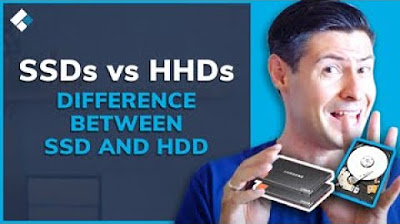Different Types of Enamel Pins - How to Choose What to Make
Summary
TLDRIn this video, the creator explains the key differences between soft and hard enamel pins, helping viewers decide which type suits their design and business needs. Soft enamel pins are cheaper, detailed, and have a textured finish, while hard enamel pins offer a smooth, polished look and a more premium feel. The video also shares tips on testing finishes, engaging your audience for feedback, and experimenting with different options. The creator emphasizes the importance of selecting the right pin type based on personal preferences, design style, and customer feedback.
Takeaways
- 😀 Soft enamel pins are the most affordable option, making them great for beginners or testing out pin designs.
- 😀 Soft enamel pins feature textured surfaces with visible ridges between the enamel and metal, giving them a distinctive look.
- 😀 Soft enamel pins allow for high levels of detail, and can even use dyed metals and rainbow finishes for added uniqueness.
- 😀 Hard enamel pins are polished smooth, creating a flat, sleek finish with no texture or visible ridges.
- 😀 Hard enamel pins are ideal for designs that require thick lines and a clean, uniform appearance.
- 😀 Hard enamel is more expensive to produce, but it carries a higher perceived value, making it a good choice for premium designs.
- 😀 Soft enamel pins may have defects like underfilling or chipping due to the nature of the production process.
- 😀 To achieve a smoother finish on soft enamel pins, you can add epoxy or glitter to the surface, which also helps prevent glitter fallout.
- 😀 Testing designs with different finishes (gold, silver, rose gold, etc.) can help you understand which finishes resonate with your audience.
- 😀 Manufacturers often allow you to split your inventory by color or finish, so you can experiment with different options and see what sells best.
- 😀 Personal preferences play a key role in choosing between soft and hard enamel, and you should feel free to experiment with different finishes based on your style and audience.
Q & A
What is the main difference between soft enamel and hard enamel pins?
-The main difference is in the finish. Soft enamel pins have a textured surface with visible ridges where the enamel sits inside the metal lines, while hard enamel pins have a smooth, polished finish with no texture.
Why are soft enamel pins often cheaper than hard enamel pins?
-Soft enamel pins are cheaper because they are easier to produce. The enamel is filled into the die-struck mold and then fired without additional polishing, which makes them less expensive to manufacture.
What are some advantages of soft enamel pins?
-Soft enamel pins offer a high level of detail, various color options, and a tactile, textured finish. They're also more affordable and great for designs that can benefit from color contrasts and smaller details.
What are the potential downsides of soft enamel pins?
-Soft enamel pins can be more prone to errors like underfilling or dust interference during production. Additionally, they may chip easily during handling and packaging due to the lack of a protective coating over the enamel.
How can you improve the finish of soft enamel pins?
-To achieve a smoother finish, you can add epoxy on top of the enamel, which covers the textured surface and gives the pin a glossy, smooth appearance. This also helps to secure elements like glitter from falling out.
Why might someone prefer hard enamel pins over soft enamel?
-Hard enamel pins are preferred for their smooth, polished finish, which offers a more refined and high-quality look. They also tend to have a higher perceived value, which can justify a higher retail price.
What are some challenges when designing hard enamel pins?
-One challenge is that hard enamel pins tend to require thicker lines in the design because the polishing process can make thin lines thicker. Additionally, hard enamel is more expensive to produce compared to soft enamel.
Can you combine both soft and hard enamel pins in your collection?
-Yes, many pin makers choose to offer both soft and hard enamel pins in their collections. You can experiment with both finishes to determine what works best for your designs and your audience.
How can you test which enamel finish your audience prefers?
-You can test the preferences of your audience by offering both finishes, conducting polls on platforms like Instagram Stories, or analyzing sales data to see which finish sells better.
What other factors should you consider when choosing the enamel finish for your pins?
-You should consider factors such as the design's level of detail, your budget, the perceived value of the pin, and the preferences of your target audience. Additionally, experiment with different finishes to see what works best for your brand and style.
Outlines

هذا القسم متوفر فقط للمشتركين. يرجى الترقية للوصول إلى هذه الميزة.
قم بالترقية الآنMindmap

هذا القسم متوفر فقط للمشتركين. يرجى الترقية للوصول إلى هذه الميزة.
قم بالترقية الآنKeywords

هذا القسم متوفر فقط للمشتركين. يرجى الترقية للوصول إلى هذه الميزة.
قم بالترقية الآنHighlights

هذا القسم متوفر فقط للمشتركين. يرجى الترقية للوصول إلى هذه الميزة.
قم بالترقية الآنTranscripts

هذا القسم متوفر فقط للمشتركين. يرجى الترقية للوصول إلى هذه الميزة.
قم بالترقية الآنتصفح المزيد من مقاطع الفيديو ذات الصلة

How to Make Enamel Pins! // designing, ordering, & tricks for good results // #gs-jj #custompins.ca

Enamel Pins 101: Anatomy of a Pin | The Pink Samurai's Pin Series #1

(SSDs vs HHDs) What's The Difference Between SSD and HDD?

The Leica SL2 vs SL3. Why I Choose the SL2 in 2024

Dreame X50 Ultra vs X40 Ultra COMPLETE! The Ultimate Showdown – Which One to Choose?

OLTP vs OLAP | Online Transaction Processing vs Online Analytical Processing | Edureka
5.0 / 5 (0 votes)
